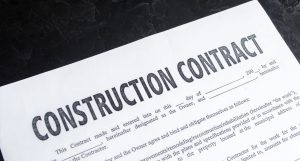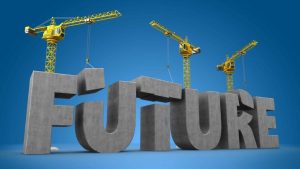Clearing the Haze That Surrounds the Construction Loan Process


Most homebuyers that are building a home will need a construction loan. And the typical homebuyer will only have built 1 to 3 homes over their entire lifetime. That means getting a construction loan is an entirely new process. Even if they have done it before, it has been 5 to 20 years in between new home projects and everything has changed since they did it the last time. A construction loan is one unique loan in the lending world. The bank is lending money on an asset that hasn’t been completely built. Banks don’t like risk and to them a construction loan is risk. That means there are lots of unique things in the construction lending process meant to reduce the risk to the bank but allow a homebuyer to finance the construction of their dream homes. Let’s clear the haze that surrounds the construction loan process and make it easier for you to understand what it takes to build your new home!
What is a Construction Loan?
 A construction loan is simply a loan from a lender that allows for the construction of a home and pays for the work as it is being done a little at a time. Most large dollar loans are secured by an asset. For example, when you get a new car loan, the lender gives the dealer the money, and they place a lien on your new car. If you don’t make the payments, the lender repossesses the car and sells it to get their money back.
A construction loan is simply a loan from a lender that allows for the construction of a home and pays for the work as it is being done a little at a time. Most large dollar loans are secured by an asset. For example, when you get a new car loan, the lender gives the dealer the money, and they place a lien on your new car. If you don’t make the payments, the lender repossesses the car and sells it to get their money back.
When it comes to building a new house, where is the asset? The bank is lending you money, but there is no asset (yet) to put a lien on, or in this case, to put a mortgage against. So, the bank pays as work is done, inspects the site to make sure the work is done, makes a disbursement (more on this later), and contractors get paid.
A construction loan only exists as long as construction is going on. When construction stops, there needs to be a new loan at the end. This is your typical 30 year or 15-year mortgage. Most homebuyers want to convert to this loan as quickly as possible. There is a One Time Close, Construction to Permanent Loan that can save you closing costs. During the construction loan process, monthly payments had to be paid but for interest only on the loan balance outstanding. Once you convert to a typical mortgage, your payments usually include an amount that goes to the principle as well as paying accumulated interest. Because lenders consider construction loans to be riskier, they cost more. This means the interest rate is usually 1% or more higher than a typical mortgage. You pay less in interest the sooner you convert from a construction loan to a 30 or 15-year mortgage!
What Should You Do First When Financing a New Home Construction?
One of the biggest misunderstandings that homebuyers building their new home have is that they need to get an estimate or quote and take it to the bank to see if they qualify for it. It is actually the opposite!! The very first thing you should do is go to a lender and get prequalified or preapproved.
These are two very different processes. Typically when you prequalify for a home loan, you’re getting an estimate of what you might be able to borrow based on the information you provide about your finances. There is no credit check. If you have a hidden or unknown issue with your credit, you won’t find out at this step. A preapproval is as close as you can get to confirm your creditworthiness without having a purchase contract in place. You will complete a mortgage application, and the lender will verify the information you provide. They’ll also perform a credit check. A preapproval is an offer from the bank to provide a loan but not a commitment from the bank to actually give you the loan. A preapproval is much better than a prequalification.
You also need to confirm that the lender will do modular home construction loans. Because so much happens offsite and happens so fast, some lenders don’t understand the modular construction process. A modular home appraises and finances for your conventional 30 year and 15-year mortgages the exact same way as a home built on site. However, during the construction loan process, some lenders are still learning how this new way to build actually reduces their risk in the construction loan period.
What Will You Need For Your Construction Loan?
 This is the frustrating part of the home building process for homebuyers. This is a big loan. Probably the largest loan most people will take out in their lifetime. The bank is going to do everything they can to do to reduce their risk. They want to know everything about you to make sure you can pay them back. Here is a sample list of things you will need to have ready for the lender to process your loan (this is not all-inclusive):
This is the frustrating part of the home building process for homebuyers. This is a big loan. Probably the largest loan most people will take out in their lifetime. The bank is going to do everything they can to do to reduce their risk. They want to know everything about you to make sure you can pay them back. Here is a sample list of things you will need to have ready for the lender to process your loan (this is not all-inclusive):
- Personal financial statement {Application}
- Pay stubs for the previous 30 day period
- Prior two year’s tax returns {With W-2’s}
- Last two months account statements {Checking, savings, stock & bond}
- Prequalification letter {For long term financing}
- Self-employed borrowers with {Corporations, partnerships, LLC’s, LLP’s}
- Business tax returns for the previous two years
- Current balance sheet and profit and loss statement
- Copy of valid photo identification
In addition, you may need lot/site information such as:
- Soils and percolation test {If applicable}
- Zoning classification, architectural and CCR requirements
- Well and septic permit {With health authority approval}
- Utility services {Available at the site}
- Proof of insurance {Hazard w/ course of construction or builders risk endorsement} Prior to closing
From the builder, you will typically need three things so the bank can order an appraisal:
- A contract
- A specification
- A floorplan
The key is to have as much of this credit information ready as soon as possible so you don’t have to search for the personal information at the last minute. There will be more items needed than is included in the list above, but this is a good start on the items you will need.
What is the Construction Loan Disbursement Process?
Once you are approved for the construction loan, the process to get final paperwork, do an appraisal, and schedule a settlement or closing. This process typically takes 5-6 weeks for most lenders. Spending money out of the construction loan proceeds is typically called a draw or disbursement. The first draw is usually to pay for any land that has a loan balance. The bank wants to be in first position on any mortgage, so they pay off the land first. Next is a disbursement for any deposits that need to be made. Usually, this is to the contractor for getting permits and with modular, to place the order for the home with the factory. Next is usually a foundation draw. Then there is the big bang! The next draw pays for the modular home upon arrival. Your home’s modules arrive about 65-85% complete.
The next draw covers some incremental work for and then the final payment when work is substantially complete, and you can move in! There will be 5 or 6 draws in a typical modular home construction loan. If you have a one-time close, construction to permanent loan, you may have to sign a document or do a little paperwork, but you are then converted to your 30 or 15-year mortgage and living in and enjoying your new home.
The More You Know…
While doing a construction loan means some more work on your part, building a home that you designed and has all of the colors and finishes that selected makes it worth it. When you chose to use modular construction for your new home, it also means you have chosen a way to build that reduced your construction timeline and made the entire process go faster!
The post Clearing the Haze That Surrounds the Construction Loan Process appeared first on Impresa Modular.




